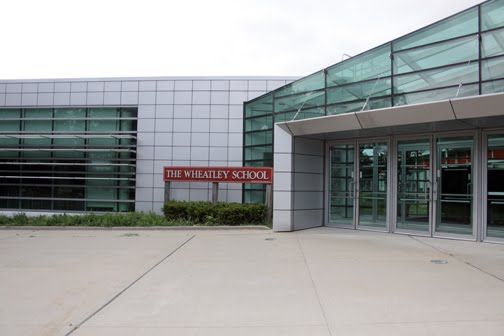The East Williston school district may have to cut $39.2 million in spending over five years to comply with the state’s tax cap law, according to projections by a district committee.
Expected increases in salaries and benefits for district employees will drive spending up to $70.1 million by the 2022-23 school year if all programs remain in place, according to numbers presented to the East Williston school board last week.
But the state law may only allow spending to rise to $59.9 million that year, requiring savings in educational programs, administrative operations and building-related expenses, Stephan Leccese, chairman of the district’s Financial Advisory Committee, said.
“In each of the next five years, in really any of the scenarios that we’ve laid out, there are going to be cuts required to the budget,” Leccese said in an interview.
Cuts would be the most drastic if the district kept property taxes flat each year, the committee’s projections show.
But administrators would still have to cut $23 million over five years if taxes rose 2 percent annually, the maximum possible under the state law limiting property tax hikes.
The law says municipalities cannot increase revenue from property taxes by more than 2 percent or the rate of inflation, whichever is lower. The number has been below 2 percent for the past four years.
Employee salaries and benefits are on track to rise to $70.1 million, or more than 81 percent of total spending, in the 2022-23 budget from $58.3 million, or 78 percent of spending, this year.
Leccese said school district officials should keep these projections in mind when they start negotiating new labor contracts in the fall. Contracts with four of the district’s labor unions, including the teachers union, expire in 2018.
“The gains that were had after the first couple years of the tax cap really reversed with respect to the growth in wages and benefits,” Leccese said.
The committee recommended several ways the district could slim spending without detracting from educational quality, such as implementing more technology in classrooms and administrative offices to improve efficiency.
East Williston has never asked residents to approve a tax hike greater than the law allows, and kept its property tax levy flat in the current budget year.
But the committee’s projections illustrate how the law constrains spending in affluent districts, which was its stated purpose.
Jaqueline Pirro, the assistant superintendent for business, said cuts will be required in the coming years, but she is uncertain whether they will be as large as the committee projected.
The district’s allowed spending and tax increases are set by a complex formula based on several factors that can vary widely from year to year, Pirro said. That makes administrators “extremely limited” when it comes to long-term predictions, she said.
“With the tax cap formula there are a series of assumptions that have to be made to project out long term, and none of those factors are known at this time,” Pirro said.
East Williston’s employee salaries are not out of step with similar affluent, high-achieving school districts, and costs for pensions and health insurance are set by the state, Pirro said.
But the district will likely try to implement some of the Financial Advisory Committee’s cost-cutting recommendations, especially those that could streamline internal communications and record-keeping with technology, Pirro said.
Meryl Fordin, president of the East Williston Teachers Association, did not return a phone call seeking comment.



